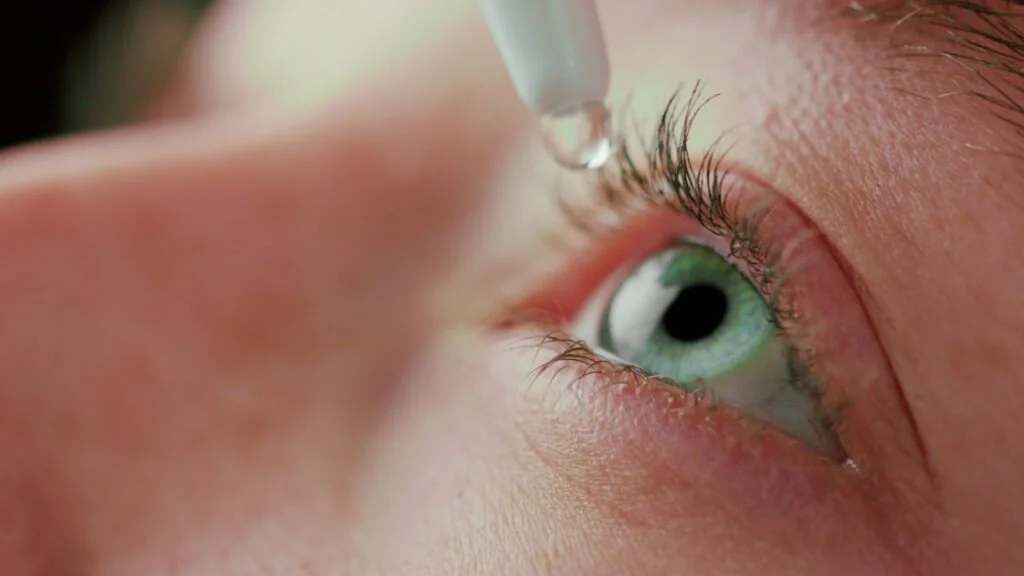Thread vein removal is a non-surgical treatment for thread veins. Thread veins are small, superficial blood vessels that can appear anywhere on your legs. While they’re not dangerous, you may want to treat them because they can cause discomfort and look unsightly.
Thread vein removal is a simple procedure that can be done in a doctor’s office, and it’s one of the most effective ways to treat thread veins. But how long will it last? This depends on several factors, including the type of treatment you had, where your thread veins were located, and how much time has passed since your treatment.
Read on to learn more about Is Thread Vein Removal Permanent, Botox For Hooded Eyelids and The Botox Treatment for Hooded Eyelids

Is Thread Vein Removal Permanent
Many patients wonder if their spider veins can be permanently removed. If you are ready to remove spider veins, you can find the services you need at Advanced Vein and Laser Center of York and Lancaster. With offices in both York and Lancaster, we offer Sclerotherapy – considered the gold standard in the treatment of spider veins. Like any medical treatment, results vary, but sclerotherapy does permanently remove most spider veins (it may take more than one treatment, however).
ABOUT SPIDER VEINS
Spider veins get their name because they are small, fine varicose veins under the surface of the skin. They are typically dark in color – red, blue or purple – and look like small star bursts. These veins can be found on the legs but may also appear in places like the face, especially on the nose and cheeks. Unlike the larger, distended varicose veins in the legs, the tiny veins often have no symptoms. Occasionally they may cause burning or itching. Many people find them objectionable for cosmetic reasons, especially when they occur on the face, and people often seek treatment for that reason.
WHAT’S SCLEROTHERAPY?
Sclerotherapy – also called traditional or injection sclerotherapy – is a very simple, minimally invasive office-based procedure that has been in use since the 1930s. An injection of a special solution into the vein irritates the vein walls, which swell and then collapse. The veins shrink and stick together, and as healing occurs, the vein is gradually absorbed into the surrounding tissue. At ALVC York and Lancaster, our doctors use an imaging system called the VeinViewer to make this procedure as easy and thorough as possible. Very small needles are inserted into each vein to inject the solution. Your treatment may require more than one injection, depending on the size and number of veins to be treated. Most patients feel nothing, but some report a minor stinging sensation.
AFTERCARE AND RESULTS
Once the procedure is complete, your legs will be wrapped with a special compression dressing or you may wear custom-fitted compression stockings. For small, fine veins, the compression treatment is necessary for about three to five days. Larger veins may require seven to 10 days. The compression keeps the vein collapsed so it will scar closed. You’ll have a follow-up appointment about two or three weeks later. Sometimes a small amount of blood becomes trapped under the skin and must be removed for optimum healing. In our experience, about 60 to 70 percent of the treated veins will disappear completely. In some cases, the vein does not respond to treatment (there’s no way to know ahead of time). Although you should not expect perfect results, it is reasonable to expect visible improvement after about four to eight weeks of healing. In most cases, treatment is permanent, although new vein “starbursts” can develop later.
Sclerotherapy is generally a good choice to permanently remove spider veins. Please contact us at ALVC York and Lancaster for an assessment or to schedule an appointment. We can also discuss financial options (your insurance may or may not cover treatment).
Botox For Hooded Eyelids
When your eyelids droop and sag, it can be a cosmetic problem. Sagging eyelids can potentially make someone look older and more tired than they actually feel and look. Additionally, when the eyelids droop, they can give rise to medical concerns, as the eyelids could disrupt your vision. While you may have heard that a surgical procedure exists to correct the issue, which is known as blepharoplasty, you may not realize that a less invasive treatment exists – an injection of Botox.
Botox is a viable means to alleviate your hooded eyelids. However, you may be wondering, to what extent can Botox help? At Dermacare Laser & Skin Care Clinic of San Diego, we want to help you address your hooded eyelid concerns by utilizing Botox.
What Are Hooded Eyelids?
Hooded eyelids are a cosmetic and medical concern that can occur for several reasons. The condition, known as ptosis, can result from the levator muscle weakening, which is the muscle that holds up your eyelids or can also result from continuous pulling on your eyelids. Actions, such as putting on makeup, can contribute to sagging eyelid skin if not done gently. While it may seem that hooded eyelids are only apparent in an older generation, they can also occur in children either because of trauma or due to neurological reasons. In short, hooded eyelids are a common condition. If left untreated, the eyelid skin can eventually sag enough to disrupt your vision and lead to secondary conditions such as headaches.
What Is Botox?
Botox is a neurotoxin that consists of botulinum toxin Type A. When this neurotoxin is injected into a muscle, it blocks specific nerve receptors from receiving a signal. Blocking this signal prevents muscle movement from occurring, effectively keeping the skin from folding over. For this reason, a Botox injection is commonly used as a way to prevent wrinkles from forming. Botox was initially FDA-approved to treat muscle eye spasms in 1989. Still, the cosmetic benefits were soon realized, causing it to become one of the most popular cosmetic treatments worldwide.
What Botox Can Treat
Botox is commonly utilized to treat what are known as dynamic wrinkles. These wrinkles are not the result of the natural aging process, which is instead referred to as static wrinkles. Instead, dynamic wrinkles are a type of wrinkle that results in facial movements made over the years. From a frown to a smile, any form of facial movement causes various facial muscles to move. When they are made consistently enough, the wrinkles can eventually appear to be permanently imprinted on the face. Dynamic wrinkles are apparent around the mouth, forehead, nose and eyes.
When Botox Is Appropriate for Hooded Eyelids
A Botox injection is an appropriate treatment for hooded eyelids. The treatment can treat a low eyebrow position or slight brow drooping, which is causing the eyelids to hang lower than they should be. Botox can be injected into the outer end of the eyebrow to elevate the eyebrow slightly. By elevating the eyebrow slightly, Botox lifts the upper eyelid and reveals a small amount of eyelid skin. Botox is a short-term solution for treating hooded eyelids. The neurotoxin’s effects will gradually wear off, and the eyebrow muscles will regain their strength. Usually, a Botox injection lasts approximately two to three months.
When Botox Cannot Help Hooded Eyelids
If your hooded eyelids are the result of an excessive amount of eyelid skin or because of a more pronounced brow droop, Botox is not a viable treatment. There are no neurotoxins that can reduce or tighten the skin. This means that if hooded eyelids are a medical concern, then Botox will be an ineffective solution. Instead, patients would be recommended blepharoplasty, which is a surgical procedure that removes excess eyelid skin. Blepharoplasty is an ideal solution for hooded eyelids because it produces long-lasting results.
However, the surgical procedure could be unfavorable if hooded eyelids result from minor skin sagging or a slightly drooping eyebrow. Blepharoplasty can be a potentially extensive procedure, is costly and poses more risks than Botox. It’s essential to weigh the benefits of Botox compared to blepharoplasty when deciding which treatment is the better option.
The Botox Treatment for Hooded Eyelids
Treating hooded eyelids with Botox is a relatively simple process. The treatment involves injecting Botox into your lower forehead and the outer ends of your eyebrows. When injected, it will paralyze the muscle by effectively preventing nerve receptors that prompt muscle movement. The treatment paralyzes the depressor muscle, which causes the eyebrow to droop, while the elevator muscle, which raises the eyebrow, remains untouched. The treatment will raise the brow a few millimeters. While this does not sound like a significant amount, it will still effectively give you a more open and alert look.
Utilizing Botox to treat hooded eyelids is best performed under the guidance of an expert injector. If not, the treatment can potentially create superficial results. At Dermacare Laser & Skin Care Clinic, our injectors are well adept at treating hooded eyelids with Botox.
Iopidine eye drops botox

While it may sound like science fiction, the FDA-approved eye lifting drop is real: UPNEEQ® is a prescription eye drop that temporarily improves droopy eyelids, or ptosis, with a single daily dose. While you won’t get the more dramatic results you can expect from eyelid lift surgery, patients see an average of about 1 mm of lift in their upper eyelid after the first use—just enough to make a noticeable difference.
For cosmetic surgeons, this first-of-its-kind non-surgical treatment for eyelid ptosis creates an option that many patients will benefit from, including those not ready for eyelid surgery or who are suffering from low-lying eyelids due to BOTOX® injections. Below, we answer your top questions about Upneeq.
What are droopy eyelids (blepharoptosis)?
The medical name for droopy eyelids is blepharoptosis (blepharo = eyelid, ptosis = sagging). Eyelids that droop may lead you to appear tired, and your eyes may look smaller than they normally are. It can also interfere with the function of your eyes.
Droopy eyelids have numerous possible causes, including aging, genetics, eye surgery, certain underlying medical conditions, or even Botox that inadvertently travels to the eyelid muscles after injection in the forehead.
What is acquired blepharoptosis, and how is it different?
Droopy eyelids may be either congenital (present from birth) or acquired, which means that they develop over time (i.e. because of aging). Congenital droopy eyelids cannot be treated with Upneeq, and may require corrective surgery. Acquired blepharoptosis may be treated with Upneeq.
If the cause of your droopy eyelids is unclear, but sure to visit an ophthalmologist first for an eye exam to rule out an underlying medical condition. Serious neurological or eye conditions can also cause eyelid ptosis, including stroke and/or cerebral aneurysm, Horner syndrome, myasthenia gravis, external ophthalmoplegia, orbital infection, and orbital masses.
How are droopy eyelids treated?
Many patients seek eyelid lift surgery to treat cases of droopy eyelids, whether for cosmetic or medical reasons. Upneeq is a revolutionary second option: it is the first treatment specifically approved by the FDA to treat acquired droopy eyelids.